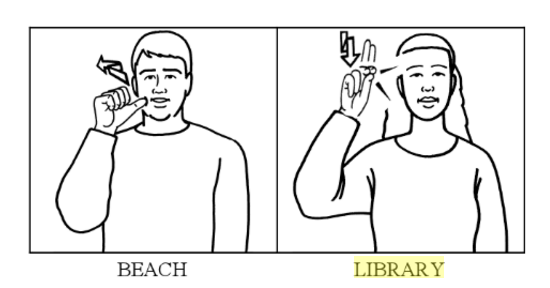
In Australian Sign Language (otherwise known as Auslan), the sign for LIBRARY is signed by moving the dominant hand next to the head and opening and closing the middle and index fingers into the thumb, a motion similar in form to the opening and closing of a hair clip. Like all languages, even spoken ones, signs in signed languages do not need to be iconic or representative of their significants; but the story of how this sign came to be also serves as a great example of how languages change and form.
Because most deaf children are the children of hearing parents, they receive most of their (sign) language instruction from special schools for the deaf. These schools are so important for signers, as they are the central locations for them to meet others who can sign and communicate with them, that the question „Where did you go to school?“ is still a very fundamental one for sign-language speakers today. Imagine the fads, phases, and linguistic innovations that take-place and spread through any typical high school, even the one you attended. These remain for a few years after graduation, and between old friends, perhaps, but almost never take root at larger, national scales. This is not the same for sign language schools, however, as the size of the community is relatively small when compared to the number of schools.
In this way, the „hair clip“ sign for LIBRARY in Auslan came from the „namesign“ used for the Librarian at one particular Victorian school for the deaf, almost 100 years ago. Because this librarian wore a prominent hair clip, the students would refer to her by this sign. This took hold so strongly in the community, because of the influence of this one particular school, that the sign remains as the general sign for LIBRARY even today.